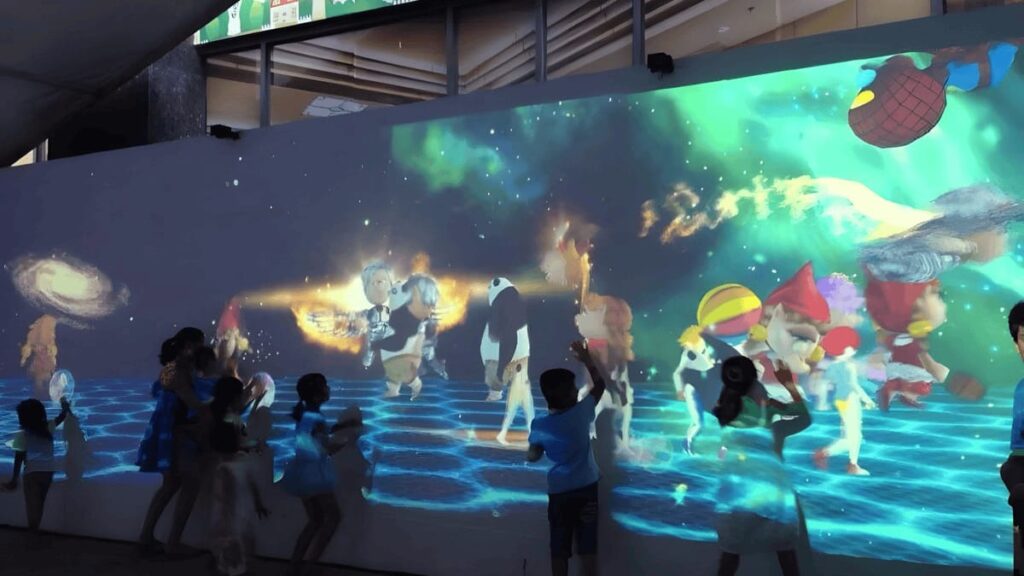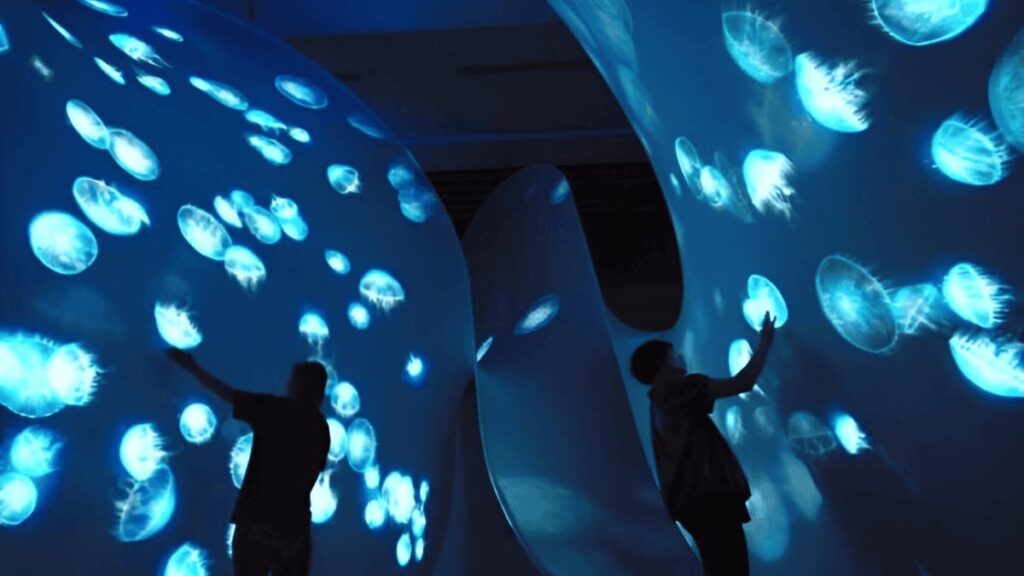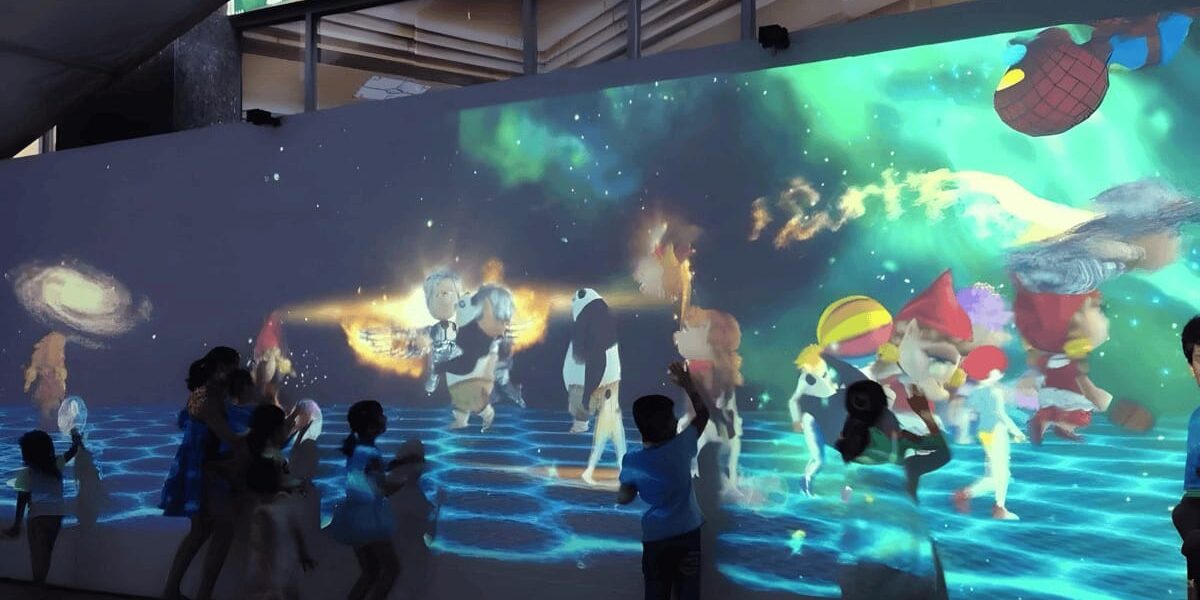A Lidar Interactive Projection System, also known as a Lidar Multi-Touch System, represents the forefront of display technology, commonly used in multimedia exhibition halls. This system employs Lidar (Light Detection and Ranging) technology, ensuring precision and reliability in various lighting conditions, whether dark or bright.

Working Principle
The Lidar interaction system uses Lidar equipment to capture participants’ movements accurately. These captured movements are then processed by a phase system that analyzes the data. This data is then integrated with an interactive system to produce interactive effects, allowing participants to interact with projected images on various surfaces. Lidar technology enables multi-point interaction on any projection medium or surface, such as walls, floors, tables, or irregularly shaped objects, facilitating touch interaction.
Features of Lidar Interactive Projection System
- Independence from Display Systems: The Lidar touch system operates independently of display systems, making it versatile and adaptable for various exhibition halls and galleries. It breaks away from the traditional multi-touch system’s constraints.
- Independence from Mediums: Utilizing advanced Lidar capture technology, the system can create an invisible multi-touch interface in the air. This removes the dependency on traditional touch surfaces, offering a more natural and comfortable user experience.
- Touch Range: The touch range varies based on the radius, with models available in 4M, 10M, 20M, 30M, and more (customizable).
- Number of Touch Points: The system supports multi-point touch, allowing multiple users to interact simultaneously from different positions, making it ideal for large-scale interactive projects.
- Strong Adaptability: It can designate touch areas on irregular planes and resists light interference, a capability beyond traditional touch screens.
- Compact and Easy to Install: The required sensor is small, suitable for complex installation environments.

Installation Requirements for Lidar Interactive Projection System
- Projection Distance: The projector mount should position the projector optimally, generally around 2.8 meters above the ground (projection medium).
- Projection Environment: The background color of the interactive projection imaging area should be white or silver-white, with no size limitation on the projection area.
- Touch Interaction on Projection Surface: The projection medium should be relatively regular and flat to ensure effective touch interaction. For irregular planes, ensure there are no obstructions near the Lidar.
- Display Medium Tilt: The display medium can be tilted, but only on a horizontal plane, without any concavity or convexity.
- Power Supply: The Lidar equipment comes with a 12V, 2A power adapter. To prevent overheating from prolonged operation, it’s advisable to disconnect the power after daily use.
Installation Flexibility and Convenience
The Lidar projection system offers significant flexibility in installation:
- Lidar can be installed above or below a wall or LCD screen.
- It can be mounted on the floor, with or without wall support.
- It supports suspended operation with the Lidar less than or greater than its radius from the bottom.
The installation process is also convenient. Without considering the content of the film, installing and debugging a Lidar system takes only one to two hours.
Get Started with CJP ROBOT
CJP ROBOT specializes in Lidar interactive systems and software supply. Our expertise ensures you get the best out of your multimedia exhibition spaces. Contact us today to explore how our solutions can enhance your interactive displays and engage your audience like never before!







